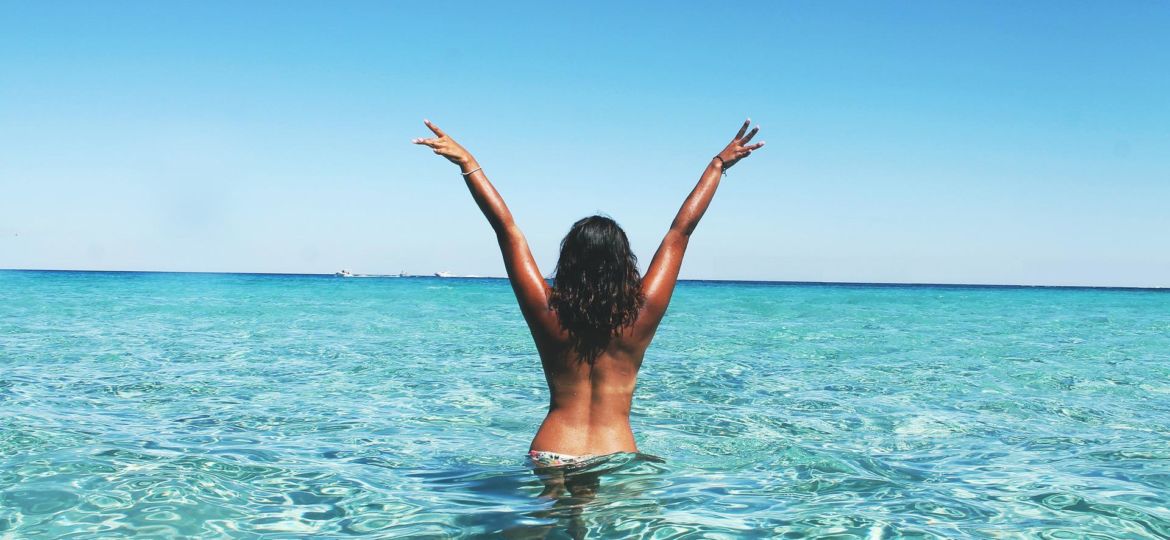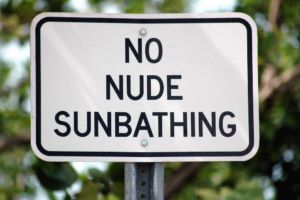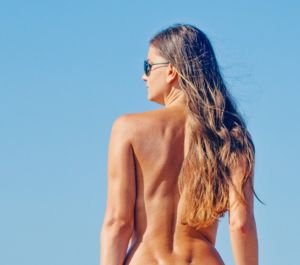

It feels like summer and that means (if you’re lucky) the temperature is hitting its high at 93°F. Strappy summer dresses and plain white tank tops are becoming closet staples to beat the heat. It does not seem to matter though. The sun still beats down on your back while sweat drips in the most uncomfortable places. You watch your boyfriend, dad, and other random men and male presenting people* strip off their shirts to gain some sense of coolness. But you must carry on, potentially overheating, because you have breasts. Our tan lines tell the story of inequality when it comes to whose nipples are appropriate in public.
Nudity, no matter if done by a male or female, is viewed unfavorably if the intent is perceived to be sexual, according to public indecency and exposure laws. There is specific verbiage that includes women’s breasts along with male and female genital exposure. Only women’s breasts are included in these laws because women’s bodies are inherently viewed as sexual through the male gaze. Intention does not truly matter when a woman exposes her breasts. The impact of doing so is perceived as her being sexual or attention seeking because our bodies cannot be separated from the sexual pleasure drawn from them.

Women’s bodies are more policed than men’s bodies. As I type, a woman’s right to choose is under attack. What we can and cannot do to or with our bodies has always been a topic of discussion ending in laws being created to tell us exactly that. Currently, there are 16 states that do not legally allow a woman to be topless in situations where men are allowed (it is either completely illegal, like in Indiana, or the laws are so ambiguous that it could be taken either way, erring on the illegal side). While more states do allow women to be top-free, cities often have their own ordinances against it. This can make it extremely difficult to know where it truly is and is not legal. Regardless, if more states than not allow women to be topless where men are allowed the same, why aren’t we seeing more top-free women? The answer is fairly simple; being allowed to expose our breasts is one thing — but feeling safe enough to do so is quite another.
The Topfreedom and Free the Nipple movements (among others) are seeking to change laws and perceptions to allow women to be topless in public places where men are permitted to be bare-chested. If a man can expose his nipples in areas designated acceptable, a woman should also be able to do the same. Even the differences in how we communicate a topless person based on gender creates this dichotomy. A topless woman invokes a sense of indecency, but a bare-chested man is just that: bare-chested. All bare nipples should be deemed either inappropriate or appropriate, depending on the setting. Unfortunately, saying that doesn’t really make it easier for a woman to walk down the sidewalk with no top on, or to post her breasts on social media. Societal perceptions of women’s breasts must change for this to work.
By giving more visual access to our bodies, we still run the risk of not being taken seriously, being accosted (verbally and physically), and being seen as purely sexual bodies. Some would argue that reaching for equality in this realm is the wrong way to fight. That giving this access to our bodies is giving in to what heterosexual men want.
While this could be true right now, I find it is important to desexualize the female body in the proper context. This can be done by seeing top-free women just going about their daily lives. Regardless, if women decide to bare their breasts in public (or not), we should be allowed to exist just as men do with the ability to determine when we want our bodies to be sexualized.
*The terms male/female and man/woman in this article refer to all those who identify as such, not dependent on chromosomes or genitals.
Author’s disclaimer: This article does not take into account skin color, sexual orientation, or body size.
Hannah Jordan is a Ravenclaw who has actual anxiety about getting into the Ravenclaw common room. Despite being pro-nudity, she does love a closet full of pretty dresses. If she isn’t taking outfit photos (her party is on Instagram), you’ll find her curled up with a book or at brunch.
All of our content—including this article—is completely free. However, we’d love if you would please consider supporting our journalism with an Indy Maven membership.






